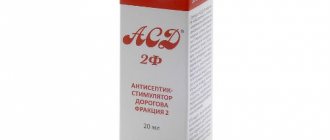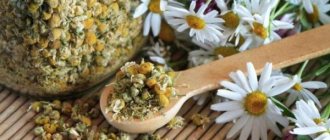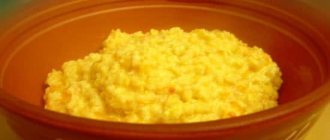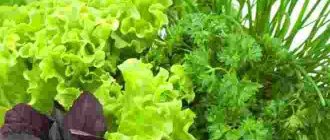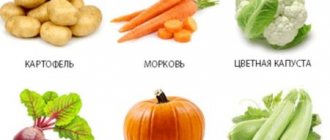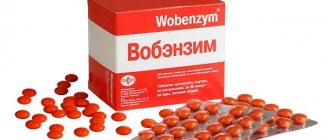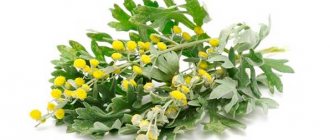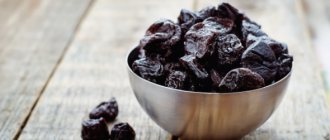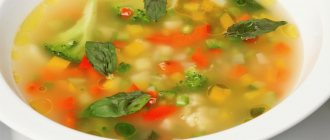Oats during exacerbation of pancreatitis
In the acute phase, the diet is prescribed by a doctor. After forced therapeutic fasting, you can eat liquid grated oatmeal in water without sugar. After a few days, stop grinding the porridge and add a little butter.
In the chronic form, it is recommended to take porridge, soups, and oatmeal casseroles.
Oatmeal cookies with rosehip infusion or weak unsweetened tea will be beneficial.
For acute pancreatitis
Slimy oatmeal is one of the very few foods that can be consumed during an exacerbation of pancreatitis. This is where the way out of forced starvation begins. Why oatmeal and not pureed rice or semolina? Everything is explained simply:
- The antioxidants contained in oatmeal help reduce inflammation;
- The body absorbs amino acids and vegetable fats that are present in oats many times faster;
- In addition, oatmeal has the property of blocking enzymes that disrupt pancreas function.
During an exacerbation of pancreatitis, patients can eat liquid porridge prepared from crushed grains and mucous soups made with a decoction of oatmeal.
If these foods are well tolerated, porridge is gradually introduced into the diet, for the preparation of which oatmeal is used. It should have a semi-liquid consistency, which can be achieved by taking cereal and water in a ratio of 1 to 3-4. If the patient's condition is quite satisfactory, you can add a small piece of butter (unsalted) to the plate of porridge. Over time, you can expand the daily menu with casseroles and oatmeal puddings. They are quite tasty on their own, but if you want to diversify the taste sensations, you can top them with sweet berry sauce or low-fat sour cream.
Attention! During exacerbation of chronic pancreatitis, do not use whole grains, as they can cause intestinal upset and colic.
The benefits and harms of oats for this disease
Dishes made from oats belong to the medicinal category. Oats contain a lot of silicon - 1000 mg per 100 g of grains; this element is one of the most significant compounds for our body. Scientists from the Russian Silicon Institute conducted fundamental research and showed that the cause of many serious diseases is a deficiency of silicon in the body.
Reference . Silicon is the main element for maintaining the elasticity of tendons, cartilage, blood vessels, intestines, valves of the cardiovascular system and sphincters of the gastrointestinal tract. In addition to connective tissue, silicon is concentrated in bones, skin, hair, lymph nodes and the thyroid gland.
Silicon promotes the formation of hormones, enzymes and amino acids in the body, improves the absorption of calcium, phosphorus, chlorine, sulfur, which are also found in large quantities in oats. Silicon colloids attract pathogenic viruses, fungi, bacteria and remove them from the body, preventing the occurrence of pathological processes.
Nutritionists recommend the correct combination of phosphorus and calcium in the diet. If there is a lack of phosphorus, an excess of calcium is detected and vice versa. 100 g of oats contain 117 mg of calcium and 361 mg of phosphorus. This natural combination is well absorbed by the body without bias towards one or the other element.
100 g of oats contain 421 mg of potassium and 135 g of magnesium. Both elements prevent the development of diseases of the digestive, cardiovascular and nervous systems, and have a beneficial effect on the functioning of the thyroid gland. These elements are tightly connected, since they are almost not absorbed separately from each other.
Sulfur is good for healthy skin, nails and hair, chloride ions are responsible for fluid balance in the body.
100 g of oats contain:
- proteins 10 g;
- fats 6.2 g;
- carbohydrates 55.1 g;
- dietary fiber 12 g;
- water 14 g.
Calorie content - 316 kcal.
Oats, like other grains, contain phytic acid, which interferes with the absorption of nutrients, in particular calcium. Therefore, people with musculoskeletal problems and pregnant women need to compensate for the lack of this element while simultaneously taking oat dishes.
Advice . An enzyme that is activated when cereal is soaked for 12-18 hours will help in the fight against phytic acid. After soaking, the cereal is washed and used to prepare porridge, soup or decoction.
Benefits of oats
The benefits of oatmeal are widely known; this dish perfectly saturates and supplies the body with vitamins and microelements necessary for the body. This cereal is widely used not only in cooking, but also in folk medicine. The main medicinal properties of the plant:
- stops inflammatory processes;
- the functions of the cardiovascular and nervous systems are normalized;
- metabolic processes are restored;
- immunity increases;
- strengthens blood vessels, helping to improve blood circulation;
- fights diseases of the kidneys and urinary system.
Rules for use for pancreatitis
At the first manifestations of pancreatitis, to stop the inflammatory process, 1 tsp. The soaked and dried grain is ground into flour, diluted in a glass of boiling water, and heated over low heat for 30 minutes. When the mixture has cooled to a warm state, take it on an empty stomach once a day.
In the acute phase, take a tablespoon of flour per glass of boiling water. The mixture is boiled for several minutes, then left for 1 hour. Consume warm 30 minutes before meals once a day. A fresh decoction is prepared every day.
To stimulate healing processes when leaving the acute phase, 3 cups of soaked grain and 3 cups of boiling water are boiled for 3 hours over low heat. After this, the broth is filtered, cooled and stored in the refrigerator. Take half a glass warm in the morning and evening 60 minutes before meals.
This is interesting:
Is it possible to eat watermelon with cholecystitis and pancreatitis?
Is it possible to eat boiled corn if you have pancreatitis?
Is it dangerous to eat pumpkin if you have pancreatitis?
How to use
You need to drink oat decoction three times a day - at seven in the morning, at one and at nine in the evening. It is at this time that metabolism accelerates, due to which all useful substances are quickly absorbed into the blood and distributed throughout the human body. If necessary, you can make an additional appointment at eleven o’clock, and move the appointment at one o’clock to three o’clock. However, you should not drink more than one liter of decoction per day.
We should not forget that oats are only an addition to the main drug therapy for pancreatitis, but not the treatment itself.
Treatment of pancreatitis with oats
In folk medicine there are several medicinal recipes with oats.
Infusion
¼ cup of soaked oats is washed, poured into a thermos, poured with 1 cup of boiling water, and left to steep overnight. Drink half a glass twice a day in the morning before breakfast and at night. The course of treatment is 2 months.
Decoction
Half a glass of soaked and washed oats is boiled for 20 minutes in half a liter of boiling water over low heat. Then the broth is poured into a ceramic container and wrapped so that it cools gradually at room temperature. After 8 hours, filter the broth and drink ½ glass three times a day before meals for a month.
Important ! A fresh decoction is prepared every day, so it is better to brew the grains overnight.
Oat kvass
Place 500 g of soaked and washed grain and 3 teaspoons of sugar in a five-liter glass jar, add 3 liters of water, tie the neck with gauze and place in a cool, dark place for two days. After two days, the liquid is drained from the jar, the grains are washed, 3 liters of clean water are poured and 3 tsp is added. Sahara. Kvass is kept in a dark place for another day, then filtered and mint or lemon balm is added to taste. Kvass is useful for those recovering.
Kissel
200 g of soaked and washed unrefined oats, 100 g of oat flakes, 200 ml of low-fat kefir are mixed in a glass container and left for a day in a dark, warm place. After this, the mixture is filtered, 1.5 liters of water are added and simmered over low heat until thickened, stirring constantly. The jelly is removed from the heat, cooled at room temperature and stored in the refrigerator. Drink one glass in between meals.
Important ! Extra instant oats are not suitable for this recipe.
Oat milk
150 g of soaked and washed unpeeled oats are poured with a liter of water for 8 hours, after which the mixture is whipped with a blender and filtered. Milk is stored in the refrigerator for no more than 5 days, drink half a glass three times a day before meals.
Attention ! During the day, the prepared medicine is stored in the refrigerator. Before use, the amount required for one time is heated to a warm state in a water bath. Cold or hot drinks or food can aggravate the disease.
Momotov's jelly recipe
Kissel Momotova can be cooked as follows:
Take a three-liter jar and start filling it with the following infusion ingredients:
- 300g small oat flakes,
- 4 tablespoons of large rolled oats flakes,
- half a glass of kefir,
- Fill to the very top with warm water, but not boiling water.
The contents of the jar must be thoroughly mixed, closed with a lid and stored in a warm place for two days. It is better not to do this in a thermos. It is best to cover the mixture with a nylon lid so that there is an outlet for carbon dioxide. In order for the mixture to ferment, you definitely need heat, otherwise nothing will work.
During these two days that the mixture is infused, it must be stirred at least one more time before brewing.
After time has passed, the mixture must be strained using a sieve and the strained solution must be poured into another jar. If desired, the pulp can be rinsed with water and poured back into a jar (separate). You can brew oats to treat pancreatitis in this form.
So we have 2 banks. One of them contains a concentrated solution, and the other contains a weaker solution. Leave both jars to steep for 10-15 hours. It is this very concentrate that you need to cook the jelly, diluting it with water and bringing it to a boil in a saucepan; there is no need to additionally brew the oats. Use brewed jelly in the same way as a classic oat decoction. If you do not like its taste, then drink jelly with the addition of honey.
There is also Izotov’s jelly. Kissel Izotova is prepared a little differently, but the result is approximately identical.
Reviews
Svetlana, 30 years old: “ A gastroenterologist I know advises everyone, even healthy people, to drink a decoction of oats; it coats the stomach well and saturates the body with useful substances.”
Marina, 42 years old: “In sanatoriums, oat decoction is actively used; it is a recognized method of treatment. This recipe uses raw and sprouted oats. My professor tells me to definitely apply it.”
Olga, 56 years old: “My sister cured pancreatitis with oat milk. The medications didn’t help, she ate almost nothing, she constantly felt sick, after a month of taking the milk the nausea stopped, but she drank the decoction for another 5 months and completely cured the pancreas.”
Mikhail, 63 years old: “When problems with the pancreas and stomach began, I started eating oatmeal in the morning, boiling it in water with salt. I’ve been eating breakfast like this for 2 years now, nothing hurts.”
Features of oat treatment
The use of oats for the treatment of pancreatitis has its own subtleties. So, it is very important to choose high-quality grain and prepare the right decoction.
It’s worth immediately warning everyone who at this moment is feverishly remembering whether there is oatmeal in the kitchen: cereal from a pack is not suitable for this purpose. It is necessary to find exactly the unrefined whole grain, which is well known to lovers of budgies: it is this that is included in the grain mixture that their pets love so much.
The raw materials for preparing a healing decoction can be purchased either at a pharmacy or go to the poultry market for it, and it is not difficult for villagers to find it in the field or grow it on their own plot.
Take care of the quality of your water. It must be filtered. You can also use a bottled one, which you use to cook food and brew tea.
Preparation for use
In order for oats to have a healing effect, they must be correctly selected and prepared for use. You can prepare a medicinal drink from oats that have not been purified. Such grain can be bought at the farm or collected independently in the field.
Before preparing healing drinks, oats undergo special preparation. The grains are thoroughly washed, placed in a container and filled with cold water. After the grains of the plant germinate, the water is drained from them, and the oats are dried. Then the sprouted oats are ground into flour; a coffee grinder is suitable for this. Medicinal drinks are prepared from the resulting powder. You can store oatmeal in a glass jar with a tight-fitting lid.
You can prepare a medicinal drink from oats using oats that have not been purified.
Oats and pancreatitis
Oats are a cereal crop that is widely used in herbal medicine. The plant is especially useful for diseases of the gastrointestinal tract - liver, gall bladder, pancreas.
Oat grains contain the following beneficial substances:
- a large amount of vitamins - retinol, calciferol, ascorbic acid, thiamine;
- many microelements;
- fatty acid;
- amino acids.
These components contain the pulp of the grain and the shell that covers it.
Oats for pancreatitis have the following therapeutic effects:
- anti-inflammatory;
- antiviral;
- cleaning;
- choleretic;
- laxative.
oats
Taking oats to treat pancreatic diseases can normalize the function of the organ and reduce the frequency and severity of exacerbations. Regular consumption of cereal improves the general condition of the body, strengthens the skin, hair and nails. Thanks to the beneficial properties of cereal, digestion improves.
Possible harm to the drink
Whole oat grains have a pronounced choleretic effect. This property is extremely dangerous for those patients in whom pancreatitis was provoked or occurs against the background of problems with the gallbladder (cholelithiasis, biliary dyskinesia, cholecystitis, etc.). In such situations, you should not resort to treatment with oat decoction, especially on your own, even in the phase of stable remission - it can provoke a new attack of the disease.
For some patients suffering from chronic diarrhea due to pancreatitis, the laxative effect of the decoction is also undesirable.
For acute pancreatitis
During acute periods of illness, treatment using oat decoction cannot be carried out due to its pronounced choleretic properties.
For chronic pancreatitis
During remission, treatment with oat decoction is allowed in the absence of contraindications. Contraindications include cholelithiasis. But before you start taking it, it is better to consult your doctor. In sanatoriums, oat decoction is used only in the treatment of pancreatitis during remission, after a preliminary medical examination.
Start taking the decoction in ¼ cup increments; if well tolerated, the amount of drink can be increased to 2/3 cup. To obtain the enveloping, stimulating and adsorbing properties of the decoction, you should drink it before meals. The course of treatment is long, from 3 weeks to six months or longer.
Assessment of compliance with diet for chronic pancreatitis in the remission phase: 7.0
Diet compliance score for acute pancreatitis: -2.0
About the author of the material Gumyarova Svetlana Alekseevna Other works of the author
Pediatrician and pediatric endocrinologist. Education: Faculty of Pediatrics, SSMU. I have been working since 2000, and since 2011 as a local pediatrician in a children's clinic. In 2021, I completed my specialization and received a certificate in pediatric endocrinology, and from the beginning of 2021 I have been additionally receiving appointments as…

